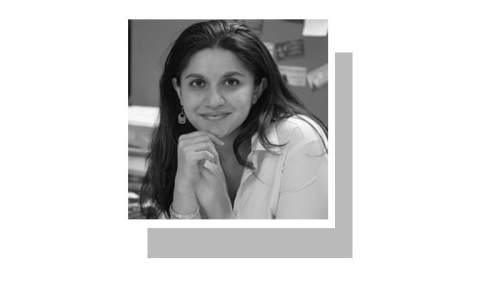
Language scientist Julie Sedivy’s fascinating book, Memory Speaks: On Losing and Reclaiming Language and Self, reminded me of the concluding verses from Abol Qasim Ferdowsi’s 11th century Persian epic Shahnameh:
“As this great history draws to a close
The land is filled with my words
Because of these words, I shall not die
For I’m alive in the language I’ve sown in the soil”
In these throbbing verses, Ferdowsi presents language as a living thing, which carries the experience of past ages within itself. It is the vehicle through which we inherit our worlds, it’s what keeps us alive long after we perish.
As someone who speaks six languages and juggles their diverse worlds simultaneously, I’ve always wondered: if language remains inextricably linked to the soil, then what about those of us who left the lands in which our languages are rooted? What’s the destiny of those who aspire to dream outside the humus of one’s mother tongue, or a language in which we inherit our world?
Sedivy’s book reminded me of these verses because the act of burying the word in soil speaks to a foundational paradox that multilingual exiles such as myself and Sedivy experience daily. On the one hand, we open the doors to new worlds of success and discovery; on the other, we’re separated from the worlds of our first languages, in which we learn to feel, think and know.
A fascinating book looks at our relationship to language, especially language rooted in far-away soils
Inhabiting this paradox fuels the fire of duality, longing, conflict and a certain kind of death, from which revival and renewal might emerge. We might not inhabit the soil of our lands in our exilic lives, but language carries within itself what professor of literature Robert Pogue Harrison calls “the source that dispenses the power of renewal in its latent futurity.”
Sedivy’s book opens with this realisation of death and separation, entrenched in the memory of her late father, who was the only connection to her “home language”, and carried all that was her heritage, or her “Czech self.” Her opening lines moved me as I read in them an act of trying to understand the very source of what makes us aware of our personal and collective identities.
In the first chapter, ‘Death’, she says that with every new language, we discover a new world as well as a new self in us. As every multilingual person knows, experiencing the loss of a language — especially that through which one knows one’s parents — illuminates all the more that which is gone. In other words, with the discovery of a new world and a new self, inhabiting a language also carries within its living, thriving and expressive world a very real possibility of its demise.
She writes: “When my father died, and with him, my connection to Czech, it was as if the viola section in the orchestra had fallen silent — not carrying the melody, it had gone unnoticed, but its absence announced how much depth and texture it had supplied … There was a part of me, I realised, that only Czech could speak to, a way of being that was hard to settle into, even with my own siblings and mother when we spoke in English. I had suddenly felt unmoored, not only from my childhood but also from the entire culture that had shaped me.”
The silenced viola is a potent metaphor for the absence experienced upon leaving the land of one’s language. It isn’t just grammar, syntax and operative use, dissociated from its speakers, that one learns in a language, which — in Sedivy’s evocative image — is like a dress laid out on a bed, ready to be worn by someone else.
Instead, language from within its world is akin to wearing that dress and intimately knowing its drapes and flows. “So much of what we know of our languages goes beyond the words and structures”, Sedivy writes. To know “how the melody can alter different meanings of a phrase and how this person and not that person is allowed to utter a particular word”, is to understand that language “doesn’t so much contain a culture as intertwines with it.”
That’s why certain words that map the landscape of feeling, or shape the cultural experience of love, resist most efforts of translation. Anyone who has ever loved someone who speaks a different mother tongue knows what it means to see the beloved inhabiting that language in one’s dreams. If dreams reflect our unconscious desires in a language-like medium, then the longing to communicate beyond the separating bridge of translation is the kind of intimacy a lover seeks with the monolingual beloved.
That’s why certain words that map the landscape of feeling, or shape the cultural experience of love, resist most efforts of translation.
Going beyond the poetic and personal, Sedivy studies the cognitive and psychological processes of language attrition as well as the duality and conflict experienced by bilingual or multilingual people living in a land where their mother tongue is not dominant.
“Success speaks English”, begins the second chapter, ‘Dreams’. And in this journey of success, one has all kinds of multicultural experiences curated primarily within the modes and expressions of the dominant language.
Sedivy’s knowledge of psycholinguistics comes brilliantly into play as she explores fascinating experiments done in the field and conjugates personal experiences with the distilled insight of a scientific experiment. The melancholy of her loss and conflict is not sentimentally poetic; it is the very matter of the science.
Several experiments that study the brain activity of bilingual speakers make it strikingly clear how each language enables a different perception of the world. More importantly, they show how differently we relate to the outside world in our different languages.
Probing whether there’s any meaningful, non-accidental link between languages and ways of being, Sedivy illustrates the big ‘yes!’ of the answer with an experiment done with bilingual Spanish-English speakers, meant to test the ‘Big Five Inventory’ of measuring stable personality traits across different cultures.
In this experiment, researchers defined five dimensions — Agreeableness, Extraversion, Conscientiousness, Neuroticism and Openness to Experience — to see if bilingual speakers responded differently depending on the language in which they took the test.
They did.
Whether they took the test in English or Spanish, monolingual and bilingual Mexicans scored lower than monolingual Americans in Agreeableness, Extraversion and Conscientiousness, and higher on Neuroticism. Doesn’t this go against common cultural expectation, because “Aren’t Mexicans supposed to be famous for their warmth, sociability and easy-going nature?”
Personality traits and the vocabulary defining them, even for a scientific experiment, are rooted in the cultural framework of the dominant language. As Sedivy unpacks the experiment, it turned out that several items huddled under the label ‘Extraversion’ were more focused on “assertive and dynamic social presentation than the preference for social interaction over solitude”, as it is commonly understood in North American context.
The lower Agreeableness score was also a mystery to the North American researchers, who understood the term as it aligned with the Latin American notion of simpatía, meaning kindness, cooperation, avoidance of conflict and politeness. It turned out that the low score was the result of a paradox: “at the heart of Latin American simpatía is the value of modesty — one is not supposed to blare one’s own horn.” To ‘claim’ simpatía — valued highly in Latin American culture — would be considered arrogant, a trait least acceptable in an agreeable person.
Sedivy also demonstrates the complexity of inhabiting multiple languages in the specific context of therapy for PTSD patients and how they use languages (later learned/ adopted ones) to defend themselves against their trauma.
In my favourite chapter, ‘Duality’, she looks at RoseMarie Pérez Foster’s work with a Chilean dance student, “Anna”, studying in New York. Referred to Foster for her alarming weight loss and depression, Anna began therapy knowing well that Foster spoke Spanish, but requested that the sessions be held in English, stating she wanted to improve her English.
However, Anna revealed nothing about her inner life after almost two months of sessions. One day, she dropped her wallet and Foster blurted out in Spanish, “Oh dear! You have dropped your change.”
Hearing Foster speak Spanish, Anna’s defences broke and, claiming illness, she cancelled her next two sessions. “Something had cracked in her.” When she returned to therapy, Anna lashed out at Foster for speaking in Spanish. Crying and admitting to feeling homesick, she claimed that the only way she had survived living in New York was by never speaking Spanish and becoming hard like an American. With Spanish, she got in touch with the part of herself that allowed her to be vulnerable. It was the language of her feeling that helped her “begin therapy in earnest.”
Sedivy’s book invites us to witness the multifaceted experience of immigrants from within, to truly understand what it means to inhabit the world through the prism of various languages. Through personal experience intertwined with scientific knowledge, Sedivy provides a solid apparatus for learning to empathise, and even embrace, the differences between those who make up multicultural societies and those who claim originary dominance over them.
In a panoramic vista of how we inhabit language and how it inhabits us, with openness and curiosity, Sedivy studies the process of losing one’s language and also provides several paths to reviving and reclaiming one’s lost self, with creative ways in adult language learning.
It’s not surprising then that, when she speaks of reclaiming languages, she uses the Ferdowsian vocabulary of land-based learning, in which one learns from within the stories as they are planted in the soil of language and, in doing so, materialises the source’s latent futurity to dispense the power of renewal.
The reviewer is a PhD candidate and teaches Urdu language and literature at the Institute of Islamic Studies, McGill University
Memory Speaks: On Losing and Reclaiming Language and Self
By Julie Sedivy
Harvard University Press, US
ISBN: 978-0674980280
368pp.
Published in Dawn, Books & Authors, March 6th, 2022















































Dear visitor, the comments section is undergoing an overhaul and will return soon.